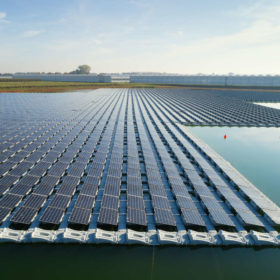Brazil surpasses 29 GW of installed PV capacity
In terms of centralized generation, the country has more than 104.4 GW of awarded projects still under construction or in development, while in distributed generation, there was more than 30 GW as of February from projects with connection requests made by Jan. 1. In both segments, the availability of network connections remains a barrier in carrying out projects.
Mapping of green hydrogen projects in Brazil
A mapping of green hydrogen projects in Brazil shows that there are at least 42 projects under various stages of development in the country.
Atlas Renewable Energy signs PPA for 902 MW of solar in Brazil
Atlas Renewable Energy has signed an unprecedented 21-year power purchase agreement (PPA) with Albras, the largest aluminum producer in Brazil. It is the longest corporate renewables PPA ever signed in Latin America.
Brazil hits 20 GW of distributed solar capacity
Brazil’s distributed-generation solar capacity has hit 20.186 GW, with more than 10.204 GW of residential rooftop installations.
Solar exceeds 28 GW in Brazil, including 20 GW of distributed-generation PV
Brazilian developers have already installed at least 2.1 GW of distributed-generation solar and more than 1.3 GW of centralized PV this year. At this average pace of 21.1 MW per day, installers could build 7.71 GW of distributed-generation PV in 2023.
Temperature estimates for floating PV modules
Scientists from the United States and Brazil have developed four different ways to estimate the temperature of floating PV modules. They validated the models with temperature measurements from a floating solar plant in Brazil.
Global study highlights potential of floating solar
An international group of researchers has calculated the potential for floating solar across the world. The results show a generation potential of 9,434 TWh per year across 114,555 global reservoirs, with 30% of their area covered. The United States leads with 1,911 TWh per year of potential, followed by China at 1,107 TWh per year and Brazil at 865 TWh per year.
The Hydrogen Stream: Fuel cells for large aircraft nearing development
In its bid to develop fuel cells for aircraft with over 100 seats within 24 months, ZeroAvia has revealed record-breaking hydrogen fuel cell performance tests. Meanwhile, Universal Hydrogen and local partners are teaming up to build hydrogen infrastructures for aviation in Japan amid a push towards hydrogen infrastructure and mobility.
Study highlights Brazil’s floating solar potential
Brazilian scientists have calculated the potential for floating solar generation in Brazil. The results show an installed potential of 43 GW for all of Brazil, with the state of Minas Gerais leading with 6 GW, followed by Bahia with 4.59 GW, and Sao Paulo with 3.87 GW.
New database for Brazil’s solar generation potential
Scientists have calculated the solar generation potential of every Brazilian state. The study show that the nation has the potential to install 337.83 GW of solar. The state of Bahia leads with 43.97 GW, followed by Minas Gerais with 41.84 GW and Mato Grosso with 39.73 GW.








